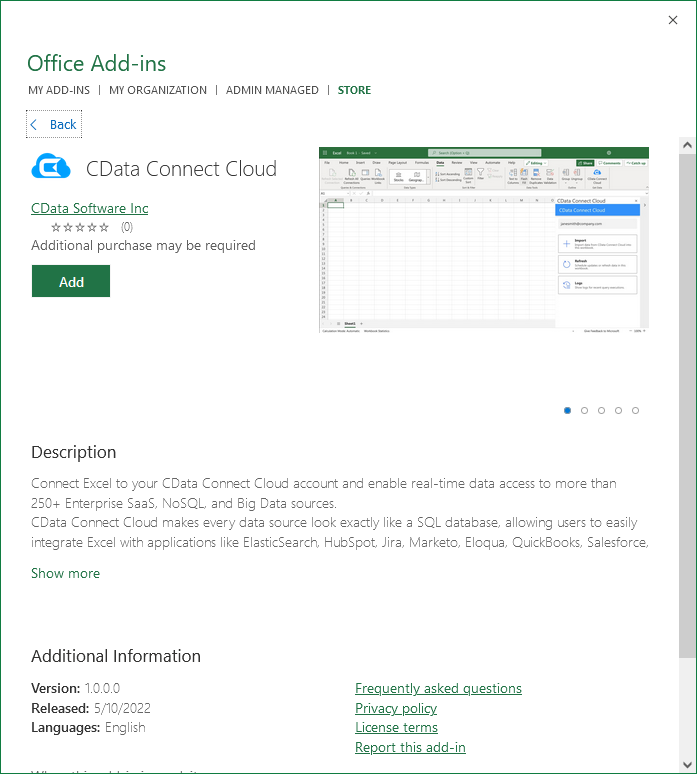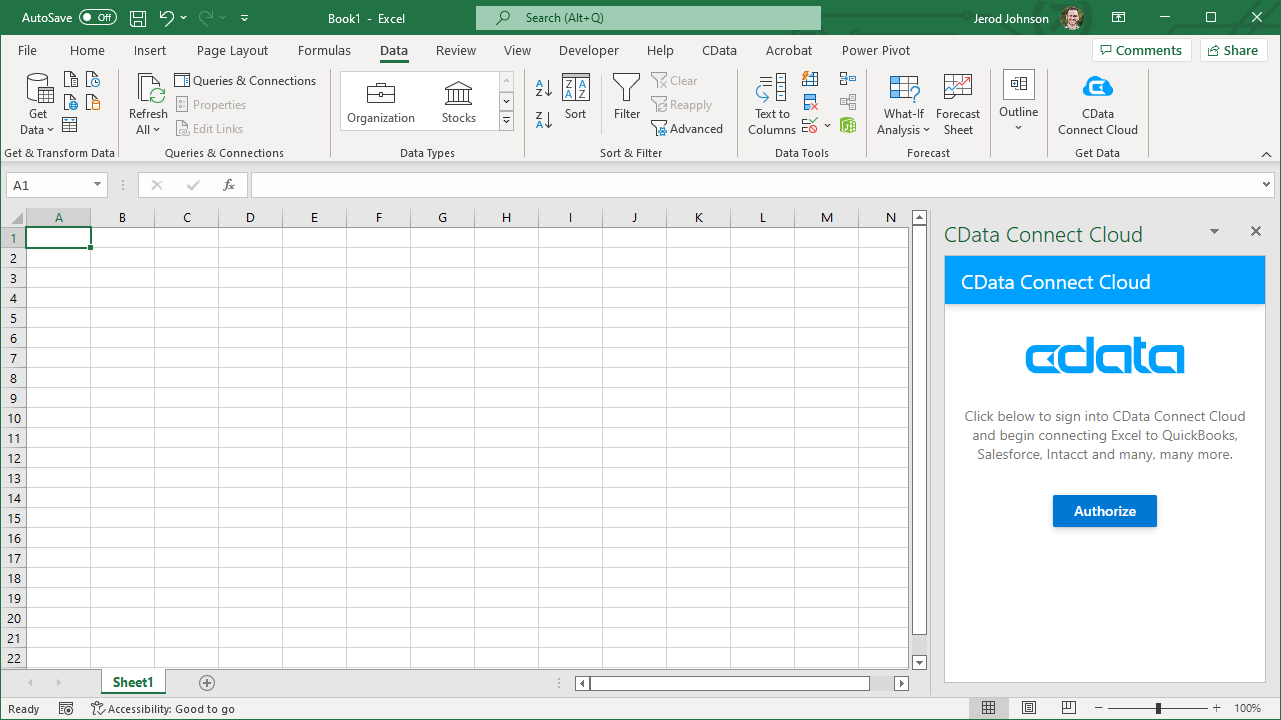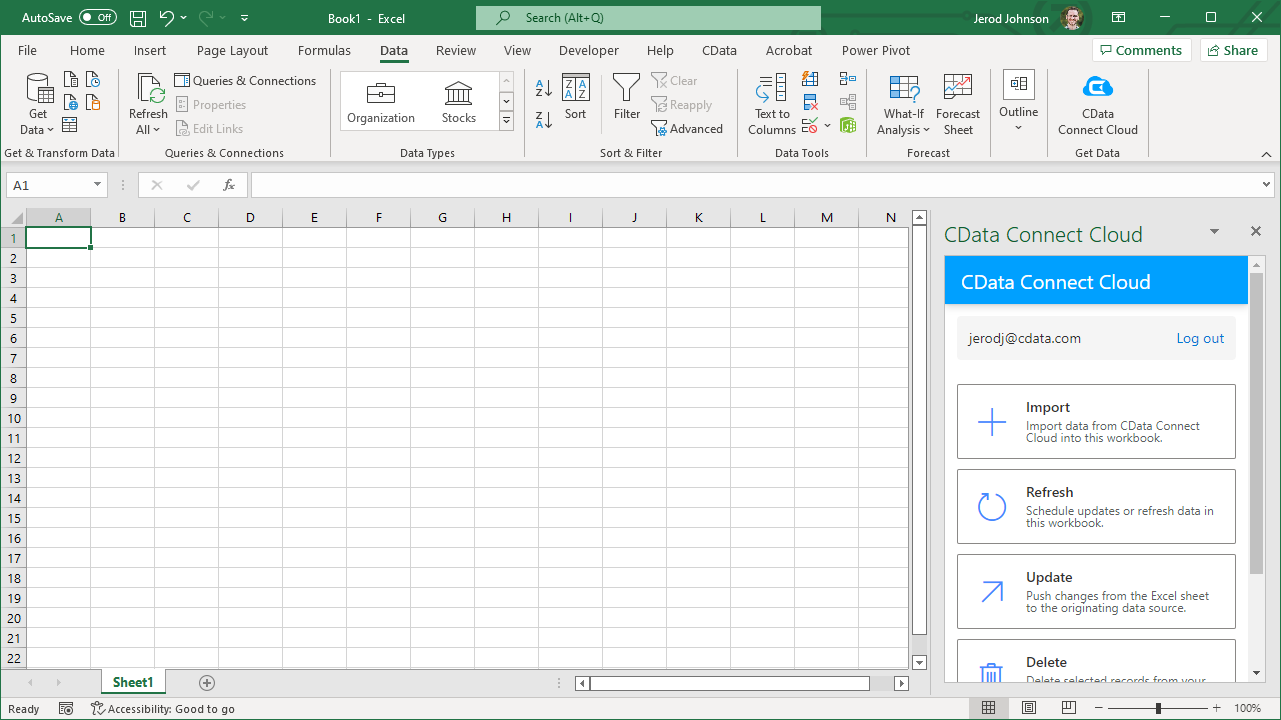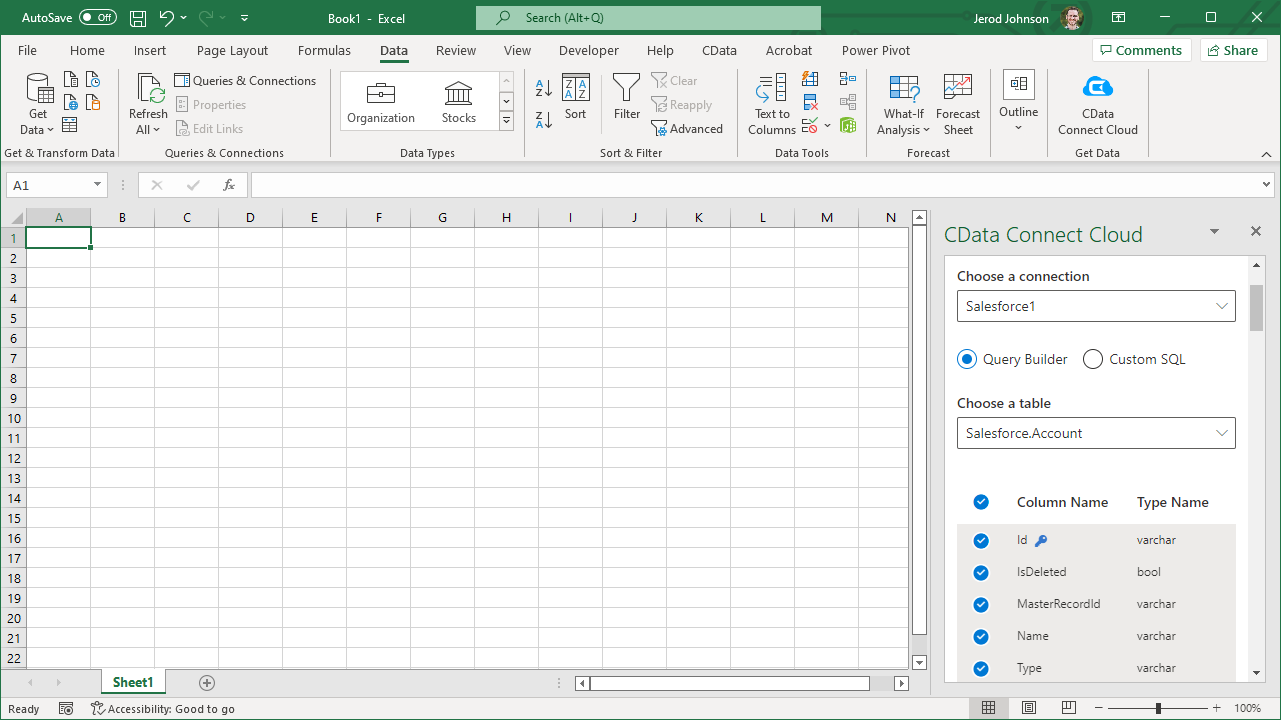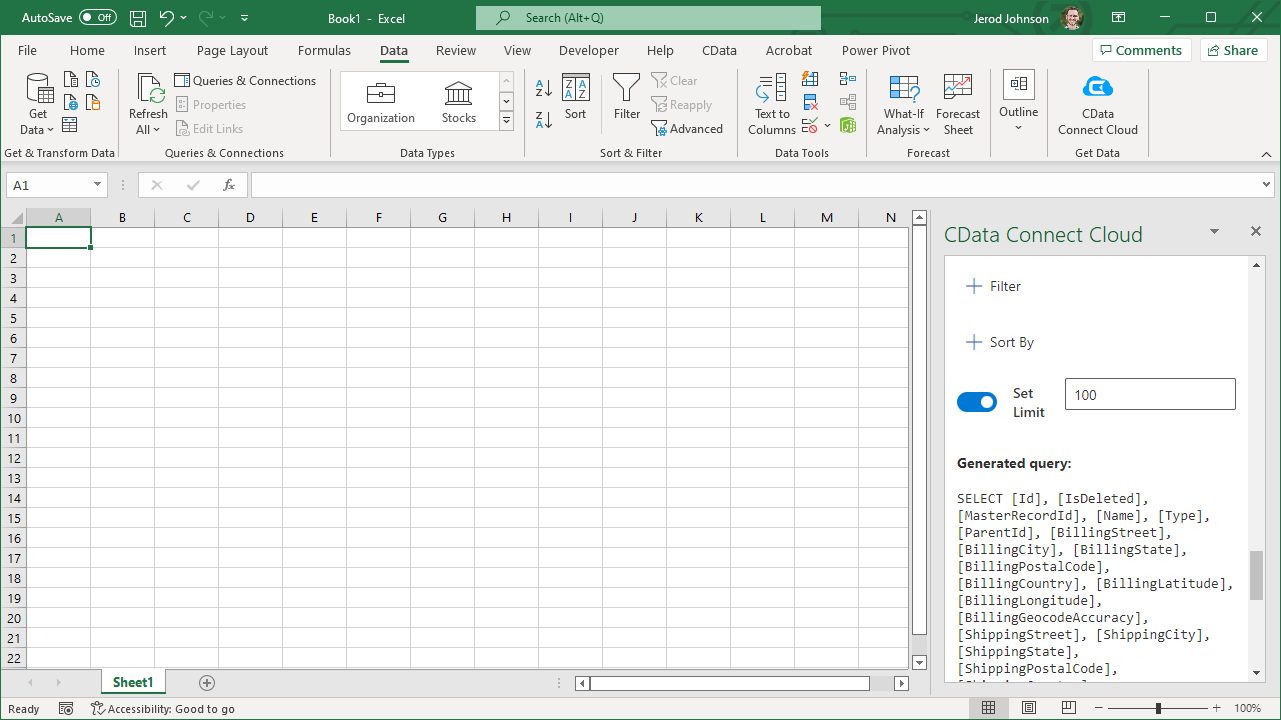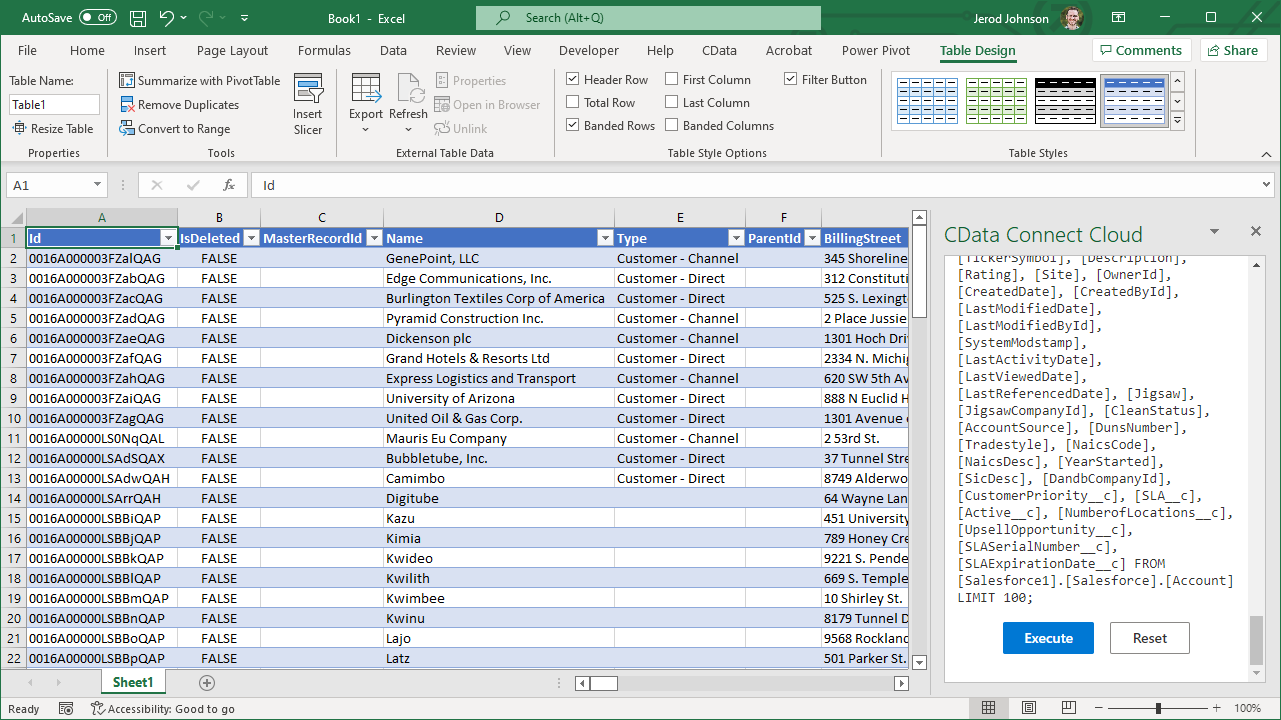Discover how a bimodal integration strategy can address the major data management challenges facing your organization today.
Get the Report →Access Live FHIR Data in Excel (Desktop)
Use CData Connect Cloud to gain access to live FHIR data from your Excel spreadsheets.
Microsoft Excel is a widely used spreadsheet software application, primarily used for tasks related to data management, analysis, and visualization. When combined with CData Connect Cloud, you gain immediate access to FHIR data directly within Excel, facilitating data analysis, collaboration, calculations, and more.This article shows how to connect to FHIR in your Connect Cloud instance and access live FHIR data in Excel spreadsheets.
CData Connect Cloud provides a pure cloud-to-cloud interface for FHIR, allowing you to easily access live FHIR data in Excel for the web. Simply use the Connect Cloud Add-In to query live data (or write your own). Using optimized data processing out of the box, CData Connect Cloud pushes all supported query operations (filters, JOINs, etc) directly to FHIR, leveraging server-side processing to quickly return FHIR data.
This setup requires a CData Connect Cloud instance and the CData Connect Cloud Add-In for Excel. To get started, sign up a free trial of Connect Cloud and install the free Connect Cloud Excel Add-In.
Configure FHIR Connectivity for Excel
Connectivity to FHIR from Excel is made possible through CData Connect Cloud. To work with FHIR data from Excel, we start by creating and configuring a FHIR connection.
- Log into Connect Cloud, click Connections and click Add Connection
![Adding a Connection]()
- Select "FHIR" from the Add Connection panel
![Selecting a data source]()
-
Enter the necessary authentication properties to connect to FHIR.
Set URL to the Service Base URL of the FHIR server. This is the address where the resources are defined in the FHIR server you would like to connect to. Set ConnectionType to a supported connection type. Set ContentType to the format of your documents. Set AuthScheme based on the authentication requirements for your FHIR server.
Generic, Azure-based, AWS-based, and Google-based FHIR server implementations are supported.
Sample Service Base URLs
- Generic: http://my_fhir_server/r4b/
- Azure: https://MY_AZURE_FHIR.azurehealthcareapis.com/
- AWS: https://healthlake.REGION.amazonaws.com/datastore/DATASTORE_ID/r4/
- Google: https://healthcare.googleapis.com/v1/projects/PROJECT_ID/locations/LOCATION/datasets/DATASET_ID/fhirStores/FHIR_STORE_ID/fhir/
Generic FHIR Instances
The product supports connections to custom instances of FHIR. Authentication to custom FHIR servers is handled via OAuth (read more about OAuth in the Help documentation. Before you can connect to custom FHIR instances, you must set ConnectionType to Generic.
![Configuring a connection (Salesforce is shown)]()
- Click Create & Test
- Navigate to the Permissions tab in the Add FHIR Connection page and update the User-based permissions.
![Updating permissions]()
With the connection configured, you are ready to connect to FHIR data from Excel.
Access Live FHIR Data in Excel
The steps below outline connecting to CData Connect Cloud from Excel to access live FHIR data.
- Open Excel, create a new sheet (or open an existing one).
- Click Insert and click Get Add-ins. (if you have already installed the Add-In, jump to step 4).
- Search for CData Connect Cloud Add-In and install the Add-in.
![Install the Add-In]()
- Click Data and open the CData Connect Cloud Add-In.
- In the Add-In panel, click Authorize to authenticate with your CData Connect Cloud instance
![Authorizing the Add-In]()
- In the CData Connect Cloud panel in Excel, click Import
![CData Connect Cloud panel in Excel]()
- Choose a Connection (e.g. FHIR1), Table (e.g. Patient), and Columns to import
![CData Connect Cloud panel in Excel]()
- Optionally add Filters, Sorting, and a Limit
![Choosing a Connection, Table, and Columns]()
- Click Execute to import the data
![Executing the Query]()
Live Access to FHIR Data from Cloud Applications
New, you have a direct, cloud-to-cloud connection to live FHIR data from your Excel workbook. You can add more data to your workbook for calculations, aggregations, collaboration, and more.
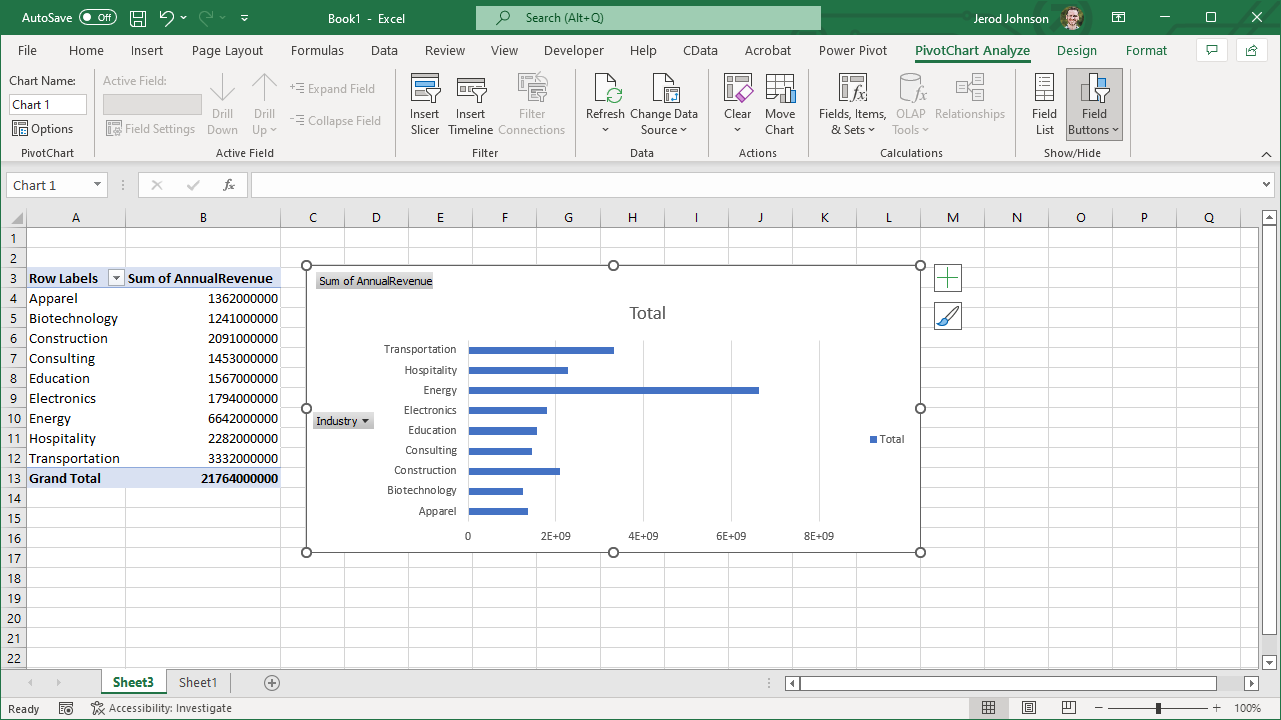
Try CData Connect Cloud and get real-time data access to 100+ SaaS, Big Data, and NoSQL sources directly from your cloud applications.










